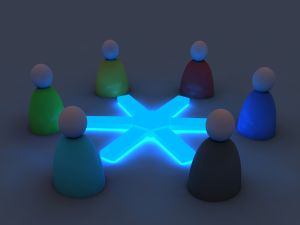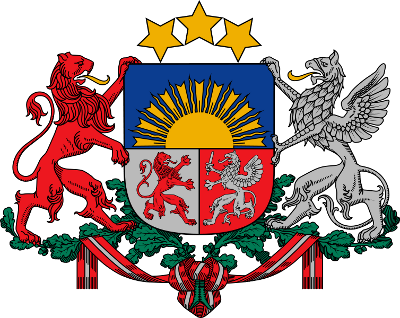Posted in Deception, Free/Libre Software, Microsoft at 11:40 am by Dr. Roy Schestowitz
Writers sponsored by Microsoft

Summary: A followup to an incident which was mentioned yesterday in a rush (Microsoft pays professors to write venomously about Microsoft’s competition); Microsoft works hard to disguise its assault on software freedom
LAST night we wrote about a so-called 'study' or book that Microsoft was funding, noting that the results were unsurprisingly like those which Microsoft wanted. Once again the London School of Economics (LSE) was involved; we’ve mentioned before how Microsoft uses it. A few hours ago Groklaw responded to the same thing by saying: “What an amazing coincidence. Two researchers take Microsoft money, no strings attached, mind you, and then after much study just happen to come to the same conclusions as Microsoft’s talking points.”
On exactly the same day that we mentioned this Wayne Borean wrote about the Alexis de Tocqueville Institution, which we alluded to in the post. He caught up with where the Alexis de Tocqueville Institution (ADTI) is today and to repeat what we put in our daily links for the afternoon:
However ADTI had first become publicly noticed a few years prior, when as part of the 1998 Tobacco Settlement Agreement, the Philip Morris corporation released millions of pages of documents concerning their operations. In them was evidence that Philip Morris had hired ADTI to campaign against tobacco regulations.
It’s a rather curious that an institution dedicated to the ‘ideas and ideals’ of Alexis de Tocqueville, on the extension and perfection of democracy would be working as hired guns for the tobacco industry. And if they worked as hired guns for the tobacco industry, who else have they worked for? Microsoft was suggested immediately after the UPI article was published.
In May of 2004 our questions were answered. ADTI put out a press release stating that Linux could suffer from patent issues. The original press release has vanished from the ADTI site, but a copy is here. The press release appeared to have only one reason for existence, to push users away from Free and Open Source Software, and towards using proprietary software.
The final capstone was a week later, when ADTI put out another press release in which they questioned whether Linus Torvalds really wrote Linux, which Pamela Jones deconstructed at the time.
Later Ken Brown, the staffer who supposedly was writing a book exposing Linux, was exposed as a liar. Ken made claims about what certain people, including Andrew S. Tanenbaum, the man who designed and programmed the Minix operating system, said, and curiously every single person that he quoted disagreed with his quotes. Such a total repudiation is unusual to say the least.
So the question to ask is, did Josh Lerner and Mark Schankerman ‘pull a Brown’? And if so, it should not surprise us because Microsoft has a history of bribing professors to promote its products and views. Right about now Microsoft has a huge PR campaign going (Josh Lerner and Mark Schankerman are living proof of it), trying to portray itself as an open source-friendly company so that it can devour it all. Groklaw has responded to it by saying: “Microsoft’s announced dream is that “open source” applications run on Windows, instead of on Linux, and everything they do seems to harmonize with that goal. They still want to kill Linux. But why would you want to help them do it? Who do you trust more, Linus or Ballmer?” █
Permalink
 Send this to a friend
Send this to a friend
Posted in Microsoft, Patents at 1:44 am by Dr. Roy Schestowitz

Summary: More evidence is suggesting that CTPN is just a proxy or a shell to Microsoft
EVERYBODY knows that Microsoft is having severe problems, so it is turning to software patents. Right now it avoids regulators by putting Novell’s patents in CPTN, which is run by the abusive monopolist that already sues Linux using software patents (e.g. TomTom case, Motorola).
Microsoft attempts to distance itself from this cartel by calling it something else and pretending that it’s independent [1, 2, 3]. Well, Microsoft’s Benjamin O Orndorff is listed there in the SEC filing about CPTN, alongside Ronald W. Hovsepian (thanks to Jan Wildeboer for the headsup). According to this page, Microsoft was “Incorporated by Benjamin O Orndorff” and others. Its key people are listed as:
Officers:
* Benjamin O Orndorff
* Bradford L Smith
* Brian Arbogast
* George Zinn
* Mary Broz
* Steven A Ballmer
I turns out that Orndorff was also an attorney at Preston Gates & Ellis. According to his LinkedIn page, he is Senior Attorney at Microsoft Corporation from August 2004 to present (6 years 6 months). Prior to this he was an Attorney at Preston Gates & Ellis (the firm of Bill Gates’ dad, which lobbies the United States government very aggressively). He worked there from June 1999 to August 2004 (5 years 3 months). Remember the role played by Preston Gates & Ellis in the SCO case (handling money from the lawsuit). █
Permalink
 Send this to a friend
Send this to a friend
Posted in Europe, Patents at 1:34 am by Dr. Roy Schestowitz

Summary: Recent articles that shed light on the patent situation in Europe, including enforcement
THIS is the last part of a long series of posts about software patents. It’s more of a list of somewhat orphaned articles. Previously we dealt with disheartening news about the second version of EIF [1, 2, 3, 4, 5], which Microsoft and the BSA managed to push patents into. Jochen Friedrich says it’s a conciliation:
Sure, the value of the first European Interoperability Framework incarnation was that is got exposed to attacks. However, the policy document got hardly read and ressembled more a general work programme. In reality the EIF v1 was an unimportant document barely able to generate substantial results in the field, in particular not in those parts of its contents which were not disputed such as multilinguality. The European Commission regularly releases official “communications” which do not generate direct results but are rather followed by more of the same, the next strategy, green paper, white paper, agenda. Neither the EIF v1 nor the EIF v2 did even reach that minor document status level of a “communication”. To me it looks like India took better conclusions from the EIF v1 as it set up a straight document on interoperability. Most critics and proponents are mislead about the role of the EIF v2 in an overall upcoming EU interoperability architectural framework and fail to see how the EIF v1 was sacrificed, as a decoy we get the EIF v2.
Incidentally, EDRI issues this warning about injunctions:
Just before Christmas, the European Commission published its report on the application of the IPR Enforcement Directive.
The text, while written in fairly neutral terms, does subtly show the Commission’s plans for the enforcement of intellectual property rights and the dangers that these hold for citizens’ rights. Two points in particular stand out – the circumvention of the E-Commerce Directive, in particular to overturn the ban on imposing a “general obligation to monitor” on Internet providers, and the intended weakening of the EU’s data protection regime for the benefit of copyright holders.
The EPO is meanwhile working to extend its scope/jurisdiction beyond Europe. “European patents may become valid in Morocco” says this blog post:
The President of the European Patent Office (EPO), Benoît Battistelli and Morocco’s Minister for Industry, Commerce and New Technologies, Ahmed Reda Chami, have signed an agreement on the validation of European patent applications and granted European patents in Morocco. The agreement will enter into force once the necessary implementing legislation has been passed by the Moroccan parliament.
Last night we learned about “[e]nhanced cooperation in the area of the creation of unitary patent protection”, which is an attempt to further globalise the patent systems and along the way increase damage and probably add software patents [via FFII]. Well, not so fast! Italy and Spain are opposing despite attempted blackmail [1, 2] and Axel H. Horns, a patent attorney, says: “Long Live The EU Patent – But A New EU Patent Court System Is Dead?”
Otherwise, the Enhanced Co-operation group might rubber-stamp the required legal texts very soon, starting with the implementation early next year. However, there is another obstacle: Even the reduced system established under the Enhanced Co-operation scheme will need to revise the European Patent Convention (EPC) by means of a Diplomatic conference in accordance with Article 172 EPC. Italy and Spain might, at least theoretically, try to obstruct such conference. However, the quorum of a two-third majority in accordance with Article 172 (2) EPC can be met even without Italy and Spain. And, if, after the Diplomatic Conference, Italy and Spain don’t ratify some amended version of the EPC in due time, they will be squeezed out of the EPC in accordance with Article 172 (4) thereof.
Horns also said that the “EU Commission [is] about to conduct various interesting ICT and/or patent related studies — http://tinyurl.com/2wdjutz”
As an example of a study, see this new piece of work titled “Internet-based Protest in European policy-making: The Case of Digital Activism” [PDF]. To quote the summary:
European Institutions, especially the European Parliament, are venues of access for digital activist networks wishing to influence policy-making on issues of intellectual property rights, internet regulation and the respect of civil rights in digital environments. We refer to these networks as “digital activism”. They are more or less loosely rooted in the hacker culture and are intensively making use of online tools in order to organize and consolidate a collective identity and build a transnational public sphere. This study focuses on the “no software patents” campaign led by this movement that aimed at influencing the directive on the patentability of computer-implemented inventions (2002-2005). By discussing the advocacy techniques – both online and offline – that were developed by this digital activist network, we provide an insight into power struggles that are currently taking place in Europe, but also in other regions of the world.
Related to activism there is this new article “Blocking Patents and Political Protest”:
Another way to think of this is that a patent could be acquired for the sole purpose of stopping certain kinds of expression. You could call this content discrimination or a sort of blocking patent. I think this is really troubling once it’s combined with the expansion of patentable subject matter to business methods. Here is an illustration:
Imagine that in 1960 business methods were patentable. A segregationist group that is thinking outside of the box decides to apply for a patent on sit-in protests. The patent is granted. When the civil rights activists in Greensboro start their demonstration (at the lunch counter depicted above at the Smithsonian), they are sued for infringement.
Regarding the report which says that the “EU court [will] discuss patents for embryonic stem cells” Glyn Moody asked, “patents more important than ethics?”
The never-ending debate on patenting human embryonic stem cells (hESCs) will receive fresh wind in its sails today as the European Court of Justice (ECJ) holds a hearing to discuss the definition of ‘human embryos’ and their industrial and commercial use.
Now, watch what the EPO Boards of Appeal is doing: [via David Hammerstein]
In case T 1051/07, the EPO’s Technical Board of Appeal 3.4.03 decided on allowability of EP 1 365 368 of Korean mobile service provider SK Telecom. The application relates to a system for executing financial transactions in that a mobile account is issued to a mobile phone subscriber and is administratively managed by the service provider, while a transaction with the mobile account is effectuated by a transaction between a bank account of the subscriber and intermediate accounts (“juridical body accounts”) of the mobile service provider at different banks.
The same author, Falk Metzler, says that New Zealand’s “Guidelines Try to Render “Embedded Software” Patentable Without Specifying this Legal Term”
In April 2010, the parliament of New Zealand voted for a major Patents Reform Bill to tighten the standards of patentability of software-implemented inventions (see related posting). The bill, as drafted by the Select Commerce Committee in July 2010, accepted that “protecting software by patenting is inconsistent with the open source model” and that “computer software should be excluded from patent protection as software patents can stifle innovation and competition” – intensely accompanied by various lobbying organisations. Clause 15 (3A) of the Patents Bill now reads:
A computer program is not a patentable invention.
For background about New Zealand see this wiki page. It is a similar situation to that which prevailed in Europe, where software patents are not legal in theory, but loopholes exist to bypass the restrictions, notably by tying to a “device”, at least in the patent application. █
Permalink
 Send this to a friend
Send this to a friend
Posted in Europe, Patents at 1:00 am by Dr. Roy Schestowitz

Summary: Bits and pieces about patents from British Web sites
THE previous post dealt with several weeks’ worth of embarrassing news from the USPTO and its clients. The problem is not just American however. In the UK, for example, the BBC does its usual patents boosting, disguised using sob stories with “entrepreneurship” in them. Is this public service for taxpayers? It is more like indoctrination.
Dr Chan’s latest innovations, WizPatent and WizFolio, arose after he wanted to patent a product but needed to sort through existing, similar patents to check for infringement or copyright issues.
In the EU/UK blog composed only by British patent lawyers there is this post about Community Restricted-Area Patent (CRAP), which is a concept it explains as follows:
Says the IPKat, this is one of the greatest tests of democracy which the European Union has faced: if the people vote for CRAP, will they get it? Says Merpel, according to some opinions, this is no question: it has sometimes been suggested the European Union delivers CRAP whether people vote for it or not.
A versatile word: CRAP as a surname, an acronym and an place name. In the plural: a patented game played with cards and dice, as well as an unpatented one.
Gordon from TechBytes has this good post which he titled “The Road To Stagnation Is Paved With Patents”:
All of the large corporations spend a lot of time and money telling anyone who will listen that patents are a vital component to innovation. They use it in PR for the education system to indoctrinate kids, the political system to extend IP laws and treaties. Patents in fact are the path to stagnation.
A UK-based journalist, Rupert Goodwins, writes: “I love technology, but software patents are breaking my heart…”
Finally, going back to an English blog, “Court of Justice rules on Czech GUIs” says the title.
Here’s a little copyright case which, the IPKat thinks, may just be wrongly decided. The Court of Justice of the European Union has just delivered its ruling in Case C‑393/09, Bezpečnostní softwarová asociace – Svaz softwarové ochrany v Ministerstvo kultury, a reference for a preliminary ruling from a Czech Court, the Nejvyšší správní soud.
In April 2001 the BSA applied to the Ministry of Culture for authorisation for the collective administration of copyright in computer programs, under Paragraph 98 of the Czech Copyright Law, its objective being to secure the right to the collective administration of graphic user interfaces (GUIs — the bits that computer users see on the screen, like icons which they can click on when navigating a program). After nearly four years of ding-dong battle in the courts and before the Ministry itself, the Ministry rejected the BSA application yet again on two grounds: (i) the Copyright Law protected only the object code and the source code of a computer program, but not the result of the display of the program on the computer screen, since the graphic user interface was protected only against unfair competition; (ii) the collective administration of computer programs was possible in theory, but since voluntary collective administration served no purpose, mandatory collective administration was not an option in reality.
Notice the role of the BSA there. Techrights actually made it into news sites (e.g. in Germany and Hungary) for writing about it. However, the case above extends further into continental Europe, which we’ll deal with in the next post. █
Permalink
 Send this to a friend
Send this to a friend
Posted in America, Patents at 12:45 am by Dr. Roy Schestowitz
Monopolies in calculus

Summary: A month-long roundup of news about software patents
THE NEWS is filled with silly software patents. These are constantly being announced by folks who believe that patenting mathematics is something commendable. “As described in the patent,” one page says, “the new technology utilizes a computational model called an artificial neural network (ANN) to reach conclusions about the content of web pages and similar documents. An artificial neural network is an adaptable computing system based on similar principles as the human brain.”
This is the type of thing people are patenting. It’s essentially maths and it can impede teaching and research. Some other company keeps pushing this old press release about a book promoting software patents. Another one about “patent-pending software service” makes it evident that in at least one country in the world one need not be shy about claiming a monopoly on mathematics.
There is a good new article titled “How Software Patents Will Ruin the World” and it goes like this:
There are methods that software developers can use to fight back against software patents. One such method is to prove that you developed the invention first. Unfortunately, this sometimes becomes difficult to prove when the “invention” is actually an idea. There are also some non-profit organizations that will take a case to defend a software developer against patent infringement accusations.
Unfortunately, fighting patents will not stop them altogether, and there is a danger that some legal actions against patents may serve to legitimize them. A better approach is to convince lawmakers to halt the blind approval of software patents by patent agencies in various countries.
If legislation is not changed, software patents threaten common software, particularly free and open source software, that is used on computers, servers, phones, and other devices all over the world. The result will be a lack of quality innovation, competition, fair pricing, and independent developers. None of that is good for the progress of society. If our technology becomes constantly entangled in patent lawsuits that take years to be resolved, development and innovation will slow to crawl, leaving the world crippled by its own laws.
The situation is already quite bad. A double-clicking patent is now a source of trouble to many:
Hopewell Culture & Design reckons it owns the act of double-clicking, and is suing Apple, Nokia, Samsung and just about everyone else for breaching its patent.
Pogson saw this patent and compared it to this:
The act of double-clicking is like rhythm in music, “rhythm is simply the timing of the musical sounds and silences“. That’s stretching things a bit but it gets to the essence of the patent, conveying instructions from the user to the computer software by varying the interval between clicks.
NPR debates one of Amazon’s more controversial patents by asking: Amazon Could Let You Return A Gift Before It’s Sent; Awful Or Awesome Idea?”
Towards the end of last year people were also chatting about playoffs being patented. See “College Football Playoffs Patented?!?; Mark Cuban Warned Not To Infringe”. There are direct links from Slashdot, too. [via]
For years, fans of college football have been clamoring for some sort of playoff system, rather than the messy rankings and bowl system that currently exists. It’s a topic that people can get pretty passionate about. Even President Obama has weighed in on the subject arguing for a playoff system. I’m not a college football fan, so I don’t really care one way or the other what happens, but there is a little tidbit in the latest discussion that I find interesting. Jarrett Streebin alerts us to the news that Mark Cuban is pushing hard to create a college football playoff system, which normally wouldn’t be of that much interest to folks around here, except in Cuban’s blog post about the topic, he posts an anonymous email from someone who claims to hold a patent on a football playoff system.
Another fine new example of bad patents is: “Location Targeted Coupons: Patented”
So it seems pretty ridiculous that, in 2005, some folks from Where Inc., applied for a patent on the concept, which has now been granted, and seems ridiculously broad (Patent number 7,848,765). The challenge was never about how to do this. That was obvious to all sorts of people. The issue was just waiting for the infrastructure to catch up. It’s ridiculous that such an idea that was widely discussed way before this patent was applied for is now locked up via a patent.
Julie Samuels from the EFF writes about a scandalous patent which we mentioned here recently. She titles it “When Bad Patents Hurt Good People: Patent Threat Shuts Down Flight Planning Site”:
In another example of using patents to stifle—rather than promote—innovation, a company called FlightPrep has come out fighting, threatening online flight planning sites with its newly obtained patent, and going so far as to sue at least one of those sites. That patent, originally filed in 2001, allegedly covers a system for generating flight plans online, hardly a novel concept. And FlightPrep is now using its patent to attempt to extract royalty payments from small companies that have been providing such a service for years—or put them out of business.
Pam Samuelson and her colleagues continue to produce good papers on the state of the patent system and they still get mentioned in the press for it.
The paper is part of a forthcoming symposium on the Bilski case, which also includes papers by Jason Schultz & Pam Samuelson (“‘Clues’ for Determining Whether Business and Service Innovations are Unpatentable Abstract Ideas”), Don Chisum (”Weeds and Seeds in the Supreme Court’s Business Method Patents Decision: New Directions for Regulating Patent Scope“), and Kevin Collins.
Patent lawyers, on the other hand, have their own biased story to tell (they have vested interests) and here is just one example of it:
First the CAFC refused to invalidate RCT’s patent on halftoning greyscale images. Next, they broadly applied Bilski to uphold a medical diagnostic patent. While the rest of us wait to see if the Supreme Court will revisit the Bilski issue in 2011 (and while I’m apparently accused of “cheering” the earlier diagnostic opinion), it’s business as usual at the PTO’s Board of Appeals. (Quick review: the Machine or Transformation (“MoT”) test–allowing a claim that is tied to a particular machine or apparatus, or transforms an article into a different state or thing–is a useful “clue” but not the sole test).
Red Hat’s site has a very different story to tell:
Much of the problem with the current U.S. patent system involves haze. Whether it is ambiguity regarding what the patent covers or murkiness about whether the technology covered by the patent is actually new, patent plaintiffs regularly use this uncertainty to their advantage. This ambiguity–often planned–allows plaintiffs to leverage settlements against businesses that are forced to either pay their own lawyers or opportunistic plaintiffs, or take their chances in court where judges and juries are often unsympathetic to companies.
This haze is particularly pronounced with software patents. Unlike electrical patents, in which the electrons of an accused circuit either move in the way described by the patent or they don’t, software patents can be manipulated to cover “inventions” far removed from the patent’s description or any intent of the patent’s inventor.
The matter of fact is, sites that target patent lawyers are increasingly willing to acknowledge the obvious: [via Glyn Moody]
The increased number of issuances raises some concern that the PTO has lowered its standard for patentability. It is true, that a higher percentage of applications are resulting in issued patents.
TechDirt has responded to this by warning: [via]
Prepare for the barrage of innovation delaying lawsuits… followed by a lot more patent applications. What’s funny is that USPTO director David Kappos actually thinks that ramping up patent approvals will help with the backlog. It won’t. Because all that will happen is that more people will try to get more ridiculous patents through, recognizing that the USPTO has massively lowered its standards, and they have a better chance of getting that magic monopoly with which they can sue other companies.
One of our readers, “buynsell”, told us in IRC that a “[c]omment on Groklaw said U.S. patent examiners “have a quota to meet.” Not sure exactly what it means, but it can’t be good. Does USPTO require a minimum number of patent approvals every year?”
Mike Masnick from TechDirt writes:
How To Make The Patent System Even Worse: Make Patent Validity Incontestable
[...]
So it seems almost laughable, then, to hear a suggestion that things should move in the other direction. However, some of the patent systems loudest defenders are now proposing that patents should become incontestable after a period of five years, meaning that no one would be able to contest the validity of those patents, even if the evidence suggests the patent was granted in error. It’s hard to fathom how this possibly makes sense. The only explanation given is that it would make patents more valuable — as if they weren’t valuable enough already. But, of course, that’s laughable. It’s based on either confusion about economics or the patent system itself. The point of the patent system is to “promote the progress.” Focusing on making patents more valuable suggests these people believe the point of the patent system is to get more patents. But the two things are not the same. Making patents incontestable, especially in cases when a patent is not valid does not promote the progress. It does the opposite.
It is clear that the patent system is becoming ever more outrageous as those who profit from patents regardless of innovation give up on quality and forget the original goals of the patent office. When a company announces “Profitable Year, Highlighted by Software Patent”, then it means patents are put before real production. TechDirt notes that “eBay Shutting Down Rubik’s Cube Knockoff Sales Due To Patent Infringement Claim (Not From Rubik’s Maker)”:
Bram Cohen, who’s known for doing quite a bit of 3-dimensional puzzle design, alerts us to the news of eBay shutting down a bunch of auctions over some Dayan Guhong and Lingyun puzzles. The Dayan Guhong and Lingyun puzzles are, basically, quite similar to the traditional Rubik’s Cube, but designed to work a bit easier. You can see a video explaining the Guhong, which shows how it’s faster than a traditional Rubik’s cube.
For an example of pro-patents propaganda (including software patents which are named specifically), see this new article written by Gary Nath, who is not an engineer but a “managing partner and founder of The Nath Law Group.” Here is an example of a pro-patents site speaking about Bilski
Bilski is no exception. Some commentators worried that the wrong decision in this case would kill the already ailing U.S. economy. At stake was what types of methods are eligible for patent protection. The patentability of “nonphysical” inventions including business methods, surgical methods, diagnostic methods and even the patentability of software itself was in question.
The impact of patents on mobile phones is one of the better demonstrations of the patent system going awry (the example of smartphones being harmed by patents is still made visible by this AP article that spreads to many more publications worldwide). How about mobile location patents for mobile phones? Well, that too is patented now: [via]
Just as geo mobile services are taking off, the U.S. Patent Office has awarded an extremely broad patent on “Location-based services” to Where. Patent No. 7,848,765 covers 31 claims ranging from sending an alert to offering a coupon when somebody crosses a geofence with a mobile device. Where CEO Walter Doyle calls it the “mother of all geofencing patents.”
What the world ends up with are embargoes like this one:
Monster Cable Keeps On Suing; Asks Court To Block Company From Attending CES
[...]
By now, you must know that Monster Cable has a rather terrible reputation for threatening and suing all sorts of other companies over intellectual property issues — often, it seems, with very little merit (remember when they went after “Monster Golf”? good times…). The latest is that Monster Cable, along with Beats Electronics, are going after competitor Fanny Wang Headphones, claiming both patent and trade dress infringement, because Fanny Wang made headphones that have some similarities in style. The patent (D552,077), by the way, is not a utility patent but a design patent, which is very narrowly focused.
[...]
As you’d expect, Beats/Monster also demand all sorts of things (treble damages, destruction of all product, etc.). The complaint also points out that Fanny Wang is planning to be presenting its headphones at CES in early January, implicitly asking the court to stop Fanny Wang from appearing at the show. Remember, kids, the lesson of the day is “why compete, if you can have the government block your competition?”
It is time to decide whether this system is productive and whether it serves its purpose at all. If it does not, it’s worth getting rid of it. █
Permalink
 Send this to a friend
Send this to a friend























 Content is available under CC-BY-SA
Content is available under CC-BY-SA